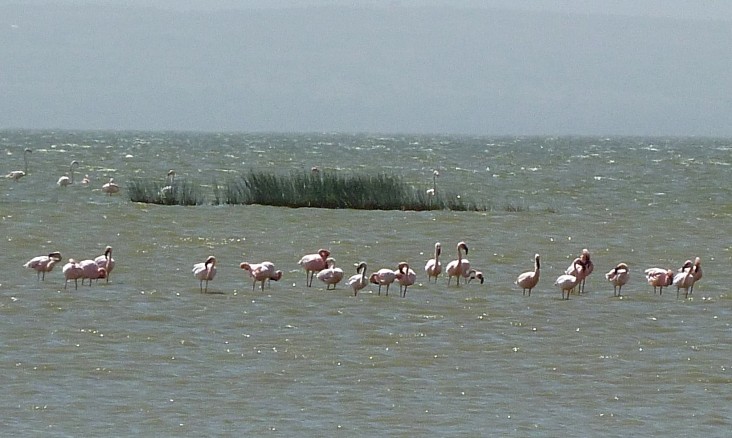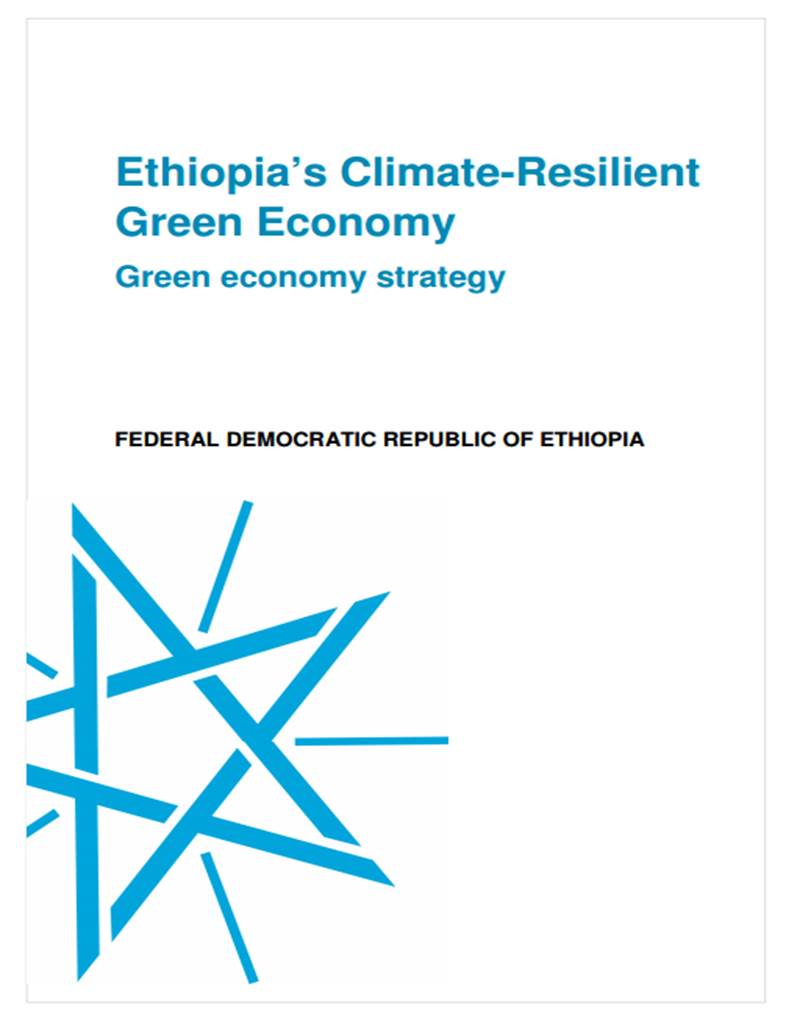
Ethiopia is a classic example of how severe degradation of ecosystems and productive agricultural lands and poor utilization of water resources increase poverty, food insecurity, loss of biodiversity, and even conflict.
By incorporating environmental issues into its work within Ethiopia, we strive to develop initiatives that make improvements in multiple sectors and promote sustainable development. Through on-going activities supporting disaster readiness, we are assisting Ethiopia improve its capacity to predict and respond to disasters—principally drought and famine to which parts of the country are prone. Especially through the Famine Early Warning Systems Network (FEWS NET) activity, we are helping to predict and plan ways to decrease the use of natural resources during times of economic and food distress, when people tend to increasingly depend on these resources for survival. Under the Productive Safety Net Program, public work interventions are undertaken at the community level to promote soil and water conservation and protect critical watersheds. Not only does watershed protection and rehabilitation reduce erosion and siltation for healthier rivers, it also provides economic and health benefits for the many people who depend on the water source. Furthermore, interventions in pastoral areas increase the grazing value of land through efforts to control or eradicate invasive species such as Prosopis juliflora and Acacia drepanolobium and improve pasture by maintaining enclosures. Bringing more land under improved management can help to reduce the total area needed to maintain cattle populations (as land is allowed to recover and remain productive) or to be cleared for agricultural expansion.
Climate Change Leadership
Ethiopia's Climate-Resilient Green Economy ![]() (pdf - 1 MB)
(pdf - 1 MB)
Ethiopia is a leader among developing countries on global climate change through its implementation of the Climate Resilient Green Economy strategy, an economy-wide, low emissions development plan that places Ethiopia on a trajectory to reach middle-income, carbon-neutral status by 2025. We support the strategy to enhance resilience and promote low emissions development. We promote improved access to science and analysis for decision making, including building the capacity of federal and regional government officials on the use of new and existing analytical tools for early warning and disaster risk preparedness, the integration of improved climate change decision-making models, doing vulnerability assessments for different livelihood zones, and updating the house economy profile for the entire country, which is used to measure the impact of climatic shocks—such as droughts—on households.
Activities Include
-
Enhancing Capacity for Low Emission Development Strategies: Support Climate Resilient Green Economy policies and actions that accelerate the transition to renewable energy and energy efficiency.
-
Land Administration to Nurture Development: Build on USAID's substantial past investments to improve land governance and land administration and strengthen land tenure rights in Ethiopia and thereby promote economic growth, increase agricultural productivity, and reduce conflict and resource degradation.
-
Pastoralist Areas Resilience Improvement and Market Expansion: Aim to increase climate resilient growth in the lowlands of Ethiopia by promoting livelihood diversification, enhancing local use of national meteorological information, and piloting weather-based livestock insurance products.
-
Resilience through Enhanced Adaptation, Action-Learning and Partnerships and Restoring Vibrant Villages and Environment are enhancing community-based disaster risk reduction in vulnerable areas to buttress households against adverse climate shocks.
-
SERVIR: Assist the Government of Ethiopia’s National Meteorology Agency in developing maps and datasets, monitoring water resource availability, and quantifying future climate impacts.
-
U.S. Forest Service: Provide targeted assistance to improve natural resource management methodologies and practices and introduce participatory landscape level rangeland planning, management and control of invasive species.
Featured Articles
-
Seeing the Forest for the Trees {Transforming Lives]
-
Bringing Safe Water to Ethiopia [Transforming Lives]
-
Ethiopians Gain Greater Access to Safe Water [Transforming Lives]
-
Breathing Live into Ethiopia’s Parched Watersheds [Transforming Lives]
-
Catching Ethiopians Before They Fall [Frontlines]
-
A Powerful Piece of Paper [Frontlines]
-
USAID Higher Education for Development Initiative Builds a New Cadre of Professionals for Ethiopia’s Water Sector [Transforming Lives]
-
Digital Maps are the Final Stamps of Approval for Ethiopia’s Community Conservation Areas [Transforming Lives]
-
Technology Builds Resilience Among Pastoralists [Transforming Lives]
Videos
Related News
-
USAID Project Highlights Successes in Building Resilience for Ethiopian Pastoralists (November 18, 2015)
-
USAID Support Enhances Borena Pastoralists' Resilience and Livelihoods (November 3, 2015)
-
USAID Launches Activities to Enhance Resilience to Climate Change (March 18, 2015)
-
USAID Announces Launch of Ethiopian Land Research and Development Network Housed at Bahir Dar University (November 25, 2014)
-
Desalination Plant Opens in Afdera (January 15, 2014)
-
USAID Awards Second Science Research Grant to Ethiopia to Address Development Challenges (July 22, 2013)
-
USAID Launches New Land Administration Program to Improve Agricultural Productivity (June 27, 2013)
-
Remarks by Nancy Lindborg: Drought Resilience and Sustainability: First General Assembly of the IGAD Regional Platform (February 23, 2013)
-
USAID Launches New Program for Pastoralist Resilience Improvement and Market Expansion (December 18, 2012)
-
Strengthening Land Administration Program Wins Praise From Ethiopian Partners (November 26, 2012)
-
USAID Higher Education for Development Initiative Builds a New Cadre of Professionals for Ethiopia’s Water Sector (March 27, 2012)









Comment
Make a general inquiry or suggest an improvement.